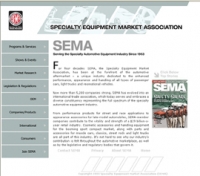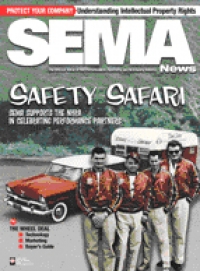By obtaining a copyright, a publisher, author, artist and/or composer gains exclusive rights to their production of original, expressive information (an artistic or literary work) for a limited time.
1. What is a copyright?
The subject matter of copyright includes any original "work of authorship" "fixed in any tangible medium of expression."
- An author is the creator of the original work.
- "Works of authorship" include, but are not limited to literary works, computer software, pictorial, graphic and sculptural works, motion pictures and audiovisual works, and sound recordings.
- "Fixed in any tangible medium of expression" means any concrete expression of an author's own idea in a medium such as a printed document, a recording, software, etc.
The subject matter of copyright does not include any procedure, process, system, method of operation, or concept which is described in such work. (Some of this subject matter may be protected via patents.)
Note: It is very important to understand the difference between an expression, which is protected by copyright, and ideas, which are not protected by copyright. A good way to make the distinction is to think of Einstein and his theory of relativity. Under copyright law, Einstein would not have been able to claim any exclusive rights covering his theory alone. Anyone may use the theory. However, once Einstein wrote a book stating, describing and explaining his theory, his book (the expression of the idea) would be protected by copyright.
2. Who holds the property rights?
The copyright owner holds the property rights. Ownership of a copyright is distinct from ownership of any material object in which the work is embodied, hence transfer of the material object does not automatically convey transfer of the copyright.
- If the work was created by one author, the author is the copyright owner and he/she holds the property rights. He/she may sell or license the property rights to another who will then stand in the place of the author.
- If the work is prepared by an employee within the scope of his or her employment, or if the work is specially commissioned or ordered, then the employer or the commissioner is considered the copyright owner unless the parties have expressly agreed otherwise in a written document which includes the parties' signatures. Recommendation: "work for hire": when you use material created by an artist who is not an employee, make sure to either pay a royalty for the public use of the work or obtain a copyright release. A written document will demonstrate that the work was commissioned rather than simply being purchased from an artist's inventory. In the latter instance, the copyright belongs to the creator unless otherwise agreed.
- If there is more than one author, the work is considered a "joint work" and all of the authors hold equal and indivisible interests in the property rights. The property rights may only be sold to another if all of the authors agree to the transaction, or if the selling author accounts to the others for any profits.
3. When do rights vest and for how long?
The property rights vest at the time the original work is fixed in a tangible medium of expression. Copyright protection is automatic, "when the pen is lifted from the paper." The protection can be reinforced and made known to the general public by registering the copyright with the federal government (Library of Congress) and by affixing the © symbol of the work, along with the owner's name and year of first publication.
A created work is automatically protected for a term spanning the copyright author's life plus an additional 70 years after the author's death. For works made for hire, the duration of the copyright term is 95 years from its publication or 120 years from its creation, whichever expires first.
4. What are the rights/limitations?
The copyright owner holds the exclusive right to do or authorize any of the following:
- To reproduce the copyrighted work in copies;
- To distribute copies of the copyrighted work to the public by sale or other transfer of ownership, or by license, rental, lease, or lending;
- To display the copyrighted work publicly (if applicable);
- To perform the copyrighted work publicly (if applicable);
- A copyright owner may prohibit any person from doing, and/or sue for infringement any person who does, any of the above activities without the copyright owner's permission or authorization.
The copyright owner may not prohibit the fair use of the copyrighted work by others. Fair use is a complex legal concept but generally can include copying or displaying the copyrighted work for purposes such as criticism, comment, news reporting, teaching, scholarship, or research.
5. Practical tips on copyrights
General: Copyright protection is automatic; however, you can seek the maximum protection of the federal law by registering the mark with the Copyright Office (part of the Library of Congress). In return for a $30 fee, a completed application form and representative copies or other identifiable materials, the Copyright Office will examine a copyright claim and, if the standards are met, issue a certificate of registration. The more frequently used forms are attached to this document.
Copyright notice: Copyright law provides that the public be given reasonable notice of the claim of copyright. The notice appearing on copies should consist of the following three elements: 1) the © symbol or the word "Copyright"; 2) the year of first publication; and 3) the owner's name. Example: © 2004 Jane Doe.
Additional information: Copyright Office forms and information are available on the Internet at: Copyright Basics. All copyright registrations must be filed by mail or delivered to the Library of Congress by courier service. The Copyright Office is expected to have an on-line registration system for public use sometime in 2005.
Examples of Copyrighted Material
A website design is subject to copyright protection. Note the copyright notice at the bottom of the webpage: Copyright 2004 Specialty Equipment Market Association (SEMA)


A periodical such as SEMA News may be registered with the U.S. Copyright Office.


